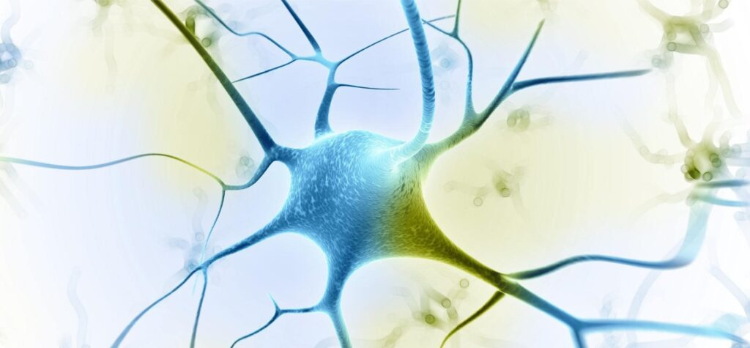
Publication Review: Unraveling the Role of Plasma GFAP in Parkinson’s Disease
By Sam Olson, PhD
Quanterix Field Applications Scientist
Introduction
Parkinson’s disease (PD) is a progressive neurodegenerative disorder primarily known for its hallmark motor symptom dysfunction, such as tremors, rigidity, and bradykinesia. However, as the disease advances, a significant number of PD patients develop cognitive impairment, and a considerable portion eventually progress to dementia. The identification of reliable biomarkers to predict cognitive decline and dementia conversion in PD patients has been an ongoing challenge in the field of neuroscience. Recently, the research by Tang et al. exploring the role of plasma glial fibrillary acidic protein (GFAP) in PD with cognitive impairment has shed new light on this important area of study. In this blog post, we delve into the significance of this research and its potential implications for improving the diagnosis and management of PD-related dementia.
Understanding Parkinson’s Disease and Cognitive Impairment
PD is primarily characterized by the loss of dopaminergic neurons in the substantia nigra, leading to a deficiency of dopamine, which underlies the motor symptoms of the disease. However, as the neurodegenerative process progresses, it can extend beyond the nigrostriatal pathway and affect other brain regions, including those involved in cognitive functions. This cognitive impairment, often referred to as Parkinson’s disease dementia (PDD), can severely impact a patient’s quality of life and complicate their overall disease management.
Exploring GFAP as a Potential Biomarker
GFAP is an astrocyte-specific intermediate filament protein that plays a crucial role in maintaining the structural integrity and functioning of astrocytes, the star-shaped glial cells in the central nervous system. During neuroinflammation the blood-brain barrier becomes permeable allowing GFAP to diffuse into the cerebrospinal fluid and then enter the blood. Recent studies have implicated astrocytes in neuroinflammatory processes and neurodegeneration, making GFAP an attractive candidate as a potential biomarker for various neurological disorders, including PD.
The levels of plasma GFAP is higher in PD patients with cognitive impairment compared to PD patients without cognitive decline and healthy controls. Additionally, the researchers sought to determine whether plasma GFAP could serve as a predictive marker for the conversion of PD patients with cognitive impairment to dementia.
Methodology and Findings
A longitudinal study was performed involving 147 PD patients with either normal cognition (PD-NC), mild cognitive impairment (PD-MCI), or disease dementia (PDD). Plasma samples were collected from all participants, and GFAP levels were measured using the Simoa® HD-X Neurology 4-plex B kit (N4PB) kit. Cognitive assessments were performed at regular intervals to track the progression of cognitive impairment and identify individuals who converted to PDD during the study period.
The researchers found that PD patients with cognitive impairment exhibited significantly higher levels of plasma GFAP compared to both PD patients without cognitive decline and healthy controls. Moreover, among PD patients with cognitive impairment, higher baseline levels of plasma GFAP were associated with a higher likelihood of conversion to PDD over time. This suggests that plasma GFAP has the potential to serve as a prognostic marker for PDD development in PD patients experiencing cognitive decline.
Significance and Future Directions
The study described here represents a significant step forward in understanding GFAP’s potential as a predictive marker for dementia conversion. The implications of these findings are promising:
- Early Detection and Intervention: Utilizing plasma GFAP as a biomarker could facilitate the early detection of cognitive impairment in PD patients, allowing for timely interventions and improved disease management.
- Personalized Treatment Strategies: Identifying PD patients at higher risk of developing PDD could enable healthcare professionals to tailor treatment approaches and provide targeted care to delay or mitigate dementia progression.
- Clinical Trials and Therapeutic Development: Validating plasma GFAP as a predictive marker could aid in the selection of appropriate participants for clinical trials investigating potential treatments for PDD, leading to more efficient drug development efforts.
- Monitoring Disease Progression: Regular assessment of plasma GFAP levels could serve as a valuable tool in monitoring the progression of cognitive decline in PD patients and potentially assessing treatment efficacy.
Conclusion
The study highlights the potential of plasma GFAP as a predictive biomarker for dementia conversion in PD patients with cognitive impairment. The ability to identify individuals at risk of developing PDD holds significant clinical relevance and could open new avenues for early intervention and improved patient outcomes. While further validation and longitudinal studies are necessary to establish GFAP as a reliable prognostic marker, the study paves the way for a better understanding of the underlying mechanisms of cognitive impairment in PD and brings us closer to the development of personalized approaches for managing this complex neurological condition. As the quest to unravel the mysteries of Parkinson’s disease continues, the investigation into GFAP as a biomarker offers hope for a future where early detection and targeted interventions may slow or even prevent the progression of PDD.
Reference
Tang, Y., Han, L., Li, S. et al. Plasma GFAP in Parkinson’s disease with cognitive impairment and its potential to predict conversion to dementia. npj Parkinsons Dis. 9, 23 (2023). https://doi.org/10.1038/s41531-023-00447-7